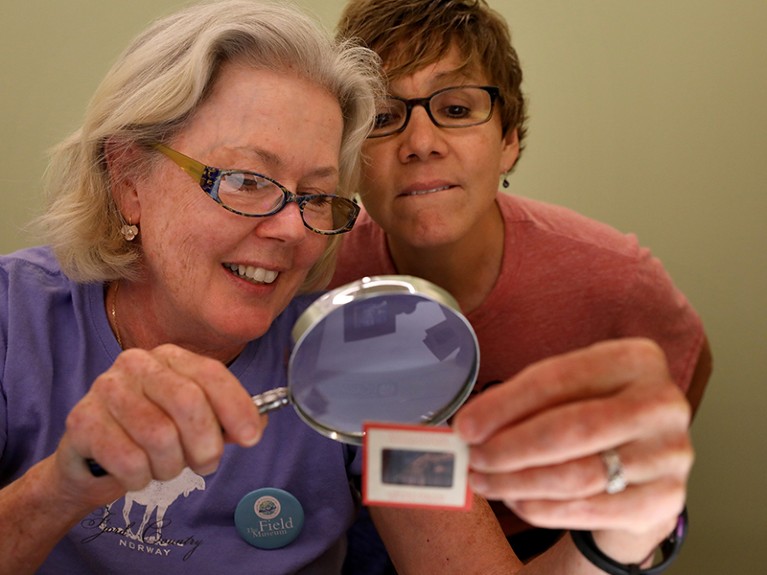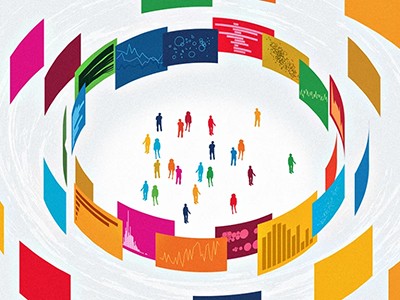
Biodiversity science is benefiting from volunteer researchers (seen here working at Chicago’s Fields Museum).Credit: Nancy Stone/Chicago Tribune/Tribune News Service/Getty
The ‘open science’ concept is gaining more followers, not least through the efforts of the cultural organization UNESCO. Over the past several years, the organization has been consulting on how science can become more collaborative, transparent, accessible, equitable and inclusive, which are all attributes of open science. And in 2021, it published a framework for what a genuinely open science could look like.
At the end of last year, UNESCO, which is headquartered in Paris, published a report on the current status of this endeavour. The report makes it clear that, although there are instances of good practice, there is still much work to do to fulfil the potential of open science globally.
In 2021, UNESCO’s member states agreed on a definition of open science that includes open access to scientific knowledge (including the humanities and social sciences); open access to research infrastructure; open collaboration between scientists and ‘societal actors’ (essentially, all those who are not scientists); and open dialogue between different knowledge systems, including between scientific knowledge and Indigenous knowledge.
The world’s goals to save humanity are hugely ambitious — but they are still the best option
Member states also pledged to incorporate the concept into their research systems, including using open-science principles in publicly funded research; supporting non-profit and community-driven publishing; encouraging the publication of research in more languages; and incentivizing the private sector to join discussions about achieving open-science goals.
UNESCO’s report describes several examples of positive initiatives, such as in research collaboration, open-access scientific publishing and public engagement in science. For example, in 2020, the Brazilian government launched the National Platform of Research Infrastructure, a digital platform in which scientific institutions can register their available infrastructure, and make it available to researchers outside their organization. This is an excellent way to spread access to expensive equipment across the research community.
Meanwhile, South African policymakers are consulting researchers to help to create a national open-science policy for the whole country. The aim here is to build more transparency, scrutiny and reproducibility into the country’s research system. The policy will also include measures to monitor progress.
The European Commission, based in Brussels, was an early proponent of open science. Between 2002 and 2020, it increased its funding for ‘societal engagement’ projects from €88 million to €462 million — an amount that is now equivalent to US$500 million. Moreover, a decade ago, all scientific publications arising from the European Union’s €80 billion Horizon 2020 programme needed to be published open-access. Citizen science is another growing area in open science with much promise, UNESCO notes. By 2018, half of all records in the Global Biodiversity Information Facility — an international open-access data repository based in Copenhagen — were from citizen scientists, up from around 10% in around 2007.
Other indicators are less rosy, however. Around three-quarters (73%) of publications in open-access repositories are in just six languages — with nearly half (46%) being in English alone. And in spite of some of the progress mentioned, overall the report finds that scientific institutions, such as universities, national science academies and journals, are struggling to include communities, in all their diversity, in the process of creating scientific knowledge itself.
Open science, done wrong, will compound inequities
Open science aligns with UNESCO’s founding mission for science and education to benefit all of humanity; and with the idea that access to science is a human right. But the organization’s interest in open science goes beyond these broad founding principles.
The UN’s Sustainable Development Goals (SDGs), adopted in 2015, are humanity’s best attempt to map a pathway towards a better future — and a more open approach to science could have a larger part to play in achieving them.
That effort needs as much help as it can get: only about 12% of the SDG targets are likely to be met by the 2030 deadline. Monitoring SDG indicators is one obvious way that citizen scientists can help. Some of the largest gaps in the collection of relevant SDG data are in low- and middle-income countries, which is where citizen research can really make a difference. In 2020, Dilek Fraisl, a data researcher at the International Institute for Applied Systems Analysis in Laxenburg, Austria, and her colleagues found that citizen-science projects were already helping to monitor at least five SDG indicators (D. Fraisl et al. Sustain. Sci. 15, 1735–1751; 2020). At the time, more than half of the data collected on indicators for sustainable cities, good health and well-being, and clean water and sanitation were provided by citizen scientists.
There’s scope for citizen scientists to do more. UN agencies have also recognized the potential of connecting citizen scientists with official data bodies. The UN Statistical Commission and UN Women are working with researchers in civil society organizations to produce resources, such as toolkits for producers of citizen-generated data.
The UNESCO report shines a much-needed light on some promising developments in open science. The challenge will be how to accumulate individual examples of good practice into something similar to a critical mass, so that, in cases such as monitoring the SDGs, they can be harnessed to get the world to where it needs to be.

 The world’s goals to save humanity are hugely ambitious — but they are still the best option
The world’s goals to save humanity are hugely ambitious — but they are still the best option
 Open science, done wrong, will compound inequities
Open science, done wrong, will compound inequities
 Progress towards the Sustainable Development Goals
Progress towards the Sustainable Development Goals





